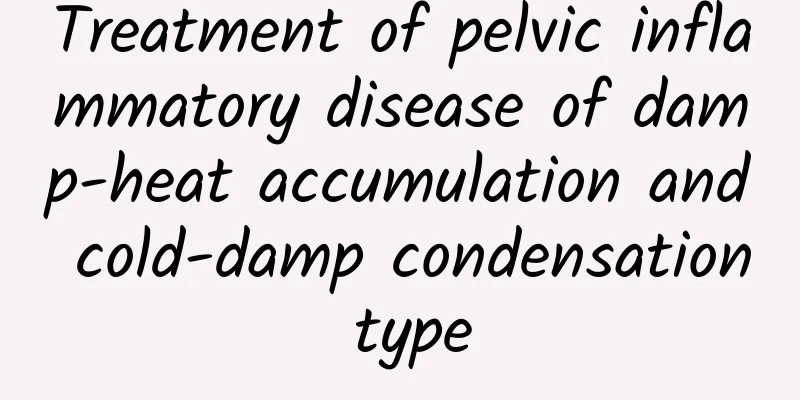Treatment of pelvic inflammatory disease of damp-heat accumulation and cold-damp condensation type

|
Traditional Chinese medicine classifies pelvic inflammatory disease into damp-heat accumulation type, cold-dampness condensation type, liver depression and spleen deficiency with blood stasis type, phlegm-dampness and blood stasis type, liver and kidney deficiency with blood stasis type, etc. According to the different symptoms, choosing the right treatment can achieve a certain therapeutic effect. For example, the treatment of damp-heat accumulation type pelvic inflammatory disease should be to clear away dampness and heat, remove blood stasis and resolve turbidity; the treatment of cold-dampness condensation type pelvic inflammatory disease should be to warm the meridians and dispel cold, promote qi and resolve blood stasis. Damp-heat accumulation type Symptoms: pain or distension in the lower abdomen, back pain, aggravated by fatigue or menstruation, and early menstruation; profuse vaginal discharge that is yellow, sticky and foul-smelling; red urine and constipation; red or dark red tongue, yellow and greasy tongue coating, and a stringy, slippery and rapid pulse. Treatment: Clear away dampness and heat, remove blood stasis and resolve turbidity. Medicinal uses: Dandelion, Patrinia paniculata, Phellodendron chinense, Cortex Moutan, Coix seeds, Plantago, Corydalis yanhusuo, Rhubarb, Wax gourd seeds, Adzuki bean, Honeysuckle vine, Cymbidium orbiculare cymbidium. Cold and damp condensation type Symptoms: cold pain in the lower abdomen, aggravated by cold and relieved by heat, cold hands and feet, soreness in the lumbar spine, delayed menstruation, scanty menstruation with blood clots; vaginal discharge that is clear, profuse, white or fishy; often accompanied by decreased libido, infertility, pale tongue or with petechiae, thin and slippery or greasy white tongue coating, deep, thin and stringy pulse or deep and slow pulse. Treatment: Warming the meridians and dispelling cold, promoting qi and removing blood stasis. Medicinal uses: Cuscuta seed, cinnamon twig, mugwort, fennel, Linderae strychnifolia, costusroot, Corydalis yanhusuo, Aconiti lobata, pollen, processed myrrh, Curcuma zedoaria, Atractylodes macrocephala, and Coix seed. |
<<: Fish that are suitable for patients with ovarian cysts
>>: Drinking tea selectively can relieve menstrual cramps
Recommend
Don't give ovarian cysts a chance!
Ovarian cysts are a type of ovarian tumor in a br...
Patients with adnexitis need to pay more attention to nursing work in their daily life
Adnexitis is a common disease in life. During the...
Common knowledge about the diet of patients with adnexitis
The diet of adnexitis has many requirements in li...
How to relieve menstrual pain and stomach pain
How to relieve menstrual pain and stomach pain? M...
How to treat uterine fibroids How to treat uterine fibroids
Uterine fibroids are the most common type of tumo...
What are the methods to prevent menopause?
The female reproductive system has its own intern...
Modify the abdominal curve! Quickly learn the "Goldfish Slimming Exercise"
Effectively promote metabolism, muscle training m...
The dangers of taking emergency contraceptive pills right after menstruation
Taking emergency contraceptive pills when menstru...
Women need to keep in mind the symptoms of ovarian cysts
At present, more and more people are aware of ova...
What should you pay attention to in your diet after abortion? Three points should be paid attention to in your diet adjustment after abortion
Nowadays, more and more people are having abortio...
Are there any dangers of cervical erosion in women? Women should be aware of these dangers of cervical erosion
Cervical erosion is a common disease in daily lif...
Let me introduce you to the symptoms of vaginitis
Many people must have heard of vaginitis, which h...
What are the symptoms of cervicitis?
Many women have cervicitis but fail to detect it ...
unexpected! Drinking beer can cool you down and beautify your skin
The summer is hot and the temperature is hitting ...
Some dietary considerations for female adnexitis
Clinically, adnexitis can be divided into acute a...









